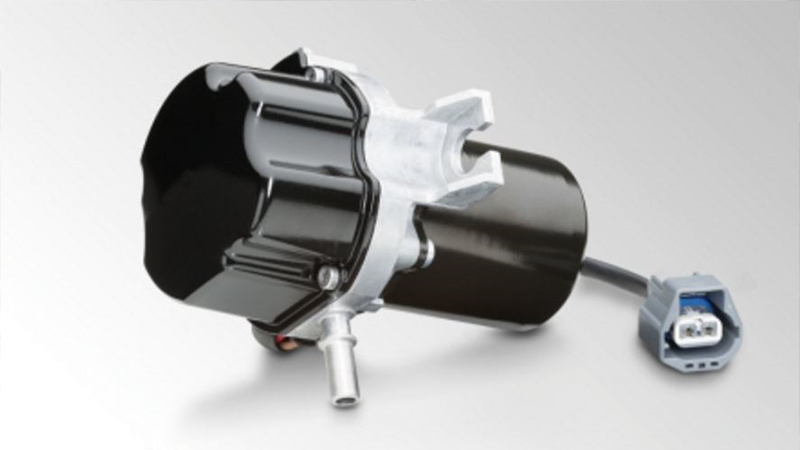

+86-17875427185
Emial:grace@szmotorplus.com
Add:Building B, Guancheng Industrial Park, Shangcun, Gongming Street, Guangming New District, Shenzhen, Guangdong
The electronic vacuum pump (EVP) has become the standard configuration of turbocharging and new energy power vehicle brake assistance. The traditional brake of vehicle is to enlarge and push the hydraulic system through the vacuum booster to make the brake force to the wheel. Recently, the proportion of turbocharging, hybrid and pure electric vehicles have been increased. The technical progress leads to the lack of vacuum provided by the engine intake manifold to the vacuum booster, and even fails to meet the requirements of brake assistance under certain conditions, such as driving at high altitude. It is urgent to provide a stable and fast response. New vacuum source for the brake assistance system needs support. Now the first economic solution is to install a vacuum pump.
There are two types of vacuum pump which is electronic and mechanical. Compared with mechanical, electronic vacuum pump is more advanced and intelligent. The mechanical vacuum pump is connected with the engine camshaft. Once the engine is running, it will work synchronously and consume a lot of energy. The electronic vacuum pump is directly driven by the motor to generate a vacuum source, which can be selectively opened according to the operation conditions of the car. The air extraction rate is not affected by the engine conditions, and it can provide a stable vacuum source for the booster. Therefore, the electronic vacuum pump (EVP) is a standard configuration for turbocharging and brake boosting of new energy vehicles.

Technical Requirement:
- Rated Voltage and Speed: To be confirmed based on different vehicles;
- Vacuum speed: 4.5S;
- Rated Current: 8.5A max.;
- Lifecycle: 600 hours;
- Corrosion resistance on surface: 480 hours for electrophoretic coiating, and 144 hours for color galvanized layer;